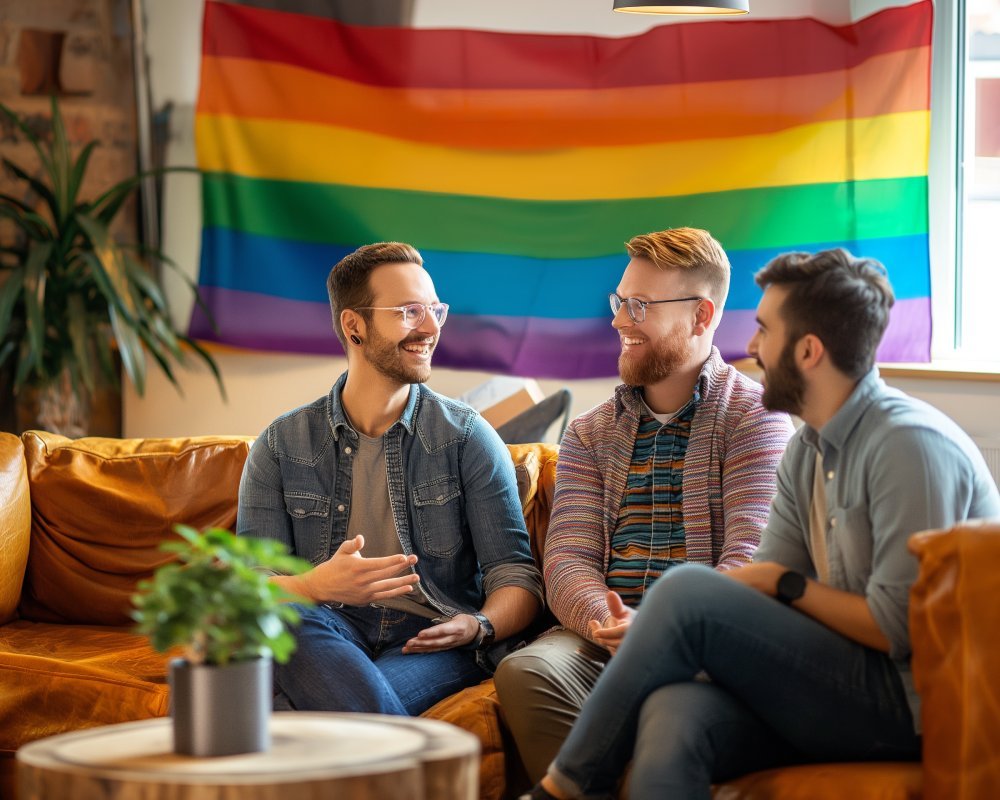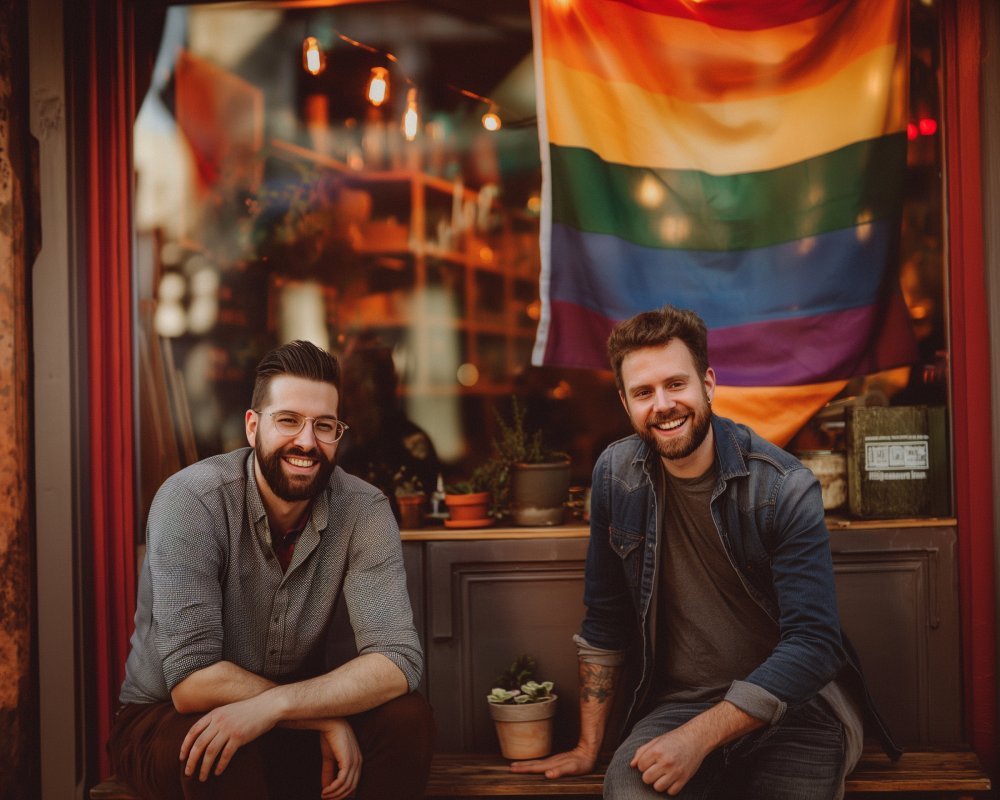
How to Deal With Homophobia as a Gay Teen – Navigating the tumultuous journey of adolescence can be especially challenging for gay teens. On top of the usual high school dynamics, peer pressure, and self-discovery, gay adolescents often face the additional hurdle of confronting homophobia. Unfortunately, whether it’s a snide comment in the school hallway, exclusion from social activities, or even outright bullying, homophobia rears its head in various insidious ways. Learning how to deal with homophobia as a gay teen becomes an essential survival skill. While society has made commendable strides toward LGBTQ+ acceptance, the reality is that many teens still grapple with discrimination. As teens learn to embrace their identities, it’s crucial to arm themselves with strategies to confront these challenges. These strategies not only help in navigating immediate issues but also build resilience for future interactions. This guide aims to empower LGBTQ+ teens by offering practical tips and advice on standing strong against homophobia.
Understanding Homophobia and Its Impact
Understanding homophobia is the first step in learning how to deal with homophobia as a gay teen. Homophobia can manifest itself as irrational fear, dislike, or prejudice against gay individuals. Rooted in ignorance, stereotypes, or cultural prejudice, these negative attitudes can be incredibly damaging. For a teen trying to come to terms with their identity, repeated exposure to such negativity can result in low self-esteem, anxiety, and depression. Recognizing the impact of these experiences is crucial. It’s also important to remember that these attitudes are a reflection of others’ ignorance, not your worth. Society, despite its progress, still has pockets of resistance, but that does not invalidate your experiences or identity. Encouraging dialogue about homophobia, both in schools and at home, can contribute to gradually dispelling these harmful attitudes. Gaining a comprehensive understanding of homophobia helps in recognizing and preparing for the different ways it can manifest in daily life.

Coping Mechanisms for Gay Teens
When figuring out how to deal with homophobia as a gay teen, it is essential to build robust coping mechanisms. Inner resilience can be a powerful tool. Journaling is one proven method. Putting pen to paper and expressing feelings and experiences can provide clarity and emotional relief. It’s also beneficial to cultivate hobbies or activities that bring joy. Sports, music, art, or community service can serve as positive outlets where a teen can build confidence and self-worth outside of their identity struggles. Mentally reframing challenges can be beneficial, too. Understanding that homophobia stems from other people’s unresolved issues can help maintain perspective. Equally, practicing self-compassion and affirmations reinforces self-esteem. Remember, it’s okay to ask for help, which can come in various forms, from therapy to confiding in trusted friends. As a teen, learning to cope with adversity builds lifelong mental fortitude and emotional intelligence.
Advertisement · Scroll to continue
Recommended
Seeking Support from Allies
The journey of discovering how to deal with homophobia as a gay teen can be daunting without support. Allies play an indispensable role in this journey. Whether these allies are friends, family, teachers, or community members, their understanding and backing can create a safe environment where a gay teen can openly express themselves. Building a network of supportive individuals helps reinforce that you are not alone. Allies can mediate when homophobic incidents arise, providing a buffer against negative experiences. Moreover, LGBTQ+ affirming groups or clubs at school can offer a sense of belonging and shared experience. Encouraging dialogue with allies about what you face can educate and further strengthen the support network. Remember, allies aren’t just there to support; they’re also learners on this journey and can benefit from guidance about how best to aid. Over time, this collective understanding promotes cultural shifts in attitudes toward LGBTQ+ individuals.

Educating Others and Promoting Understanding
A significant step in learning how to deal with homophobia as a gay teen is taking an active role in educating others. Sharing personal stories and experiences can humanize the LGBTQ+ experience, transforming misunderstood identities into relatable narratives. Teens can organize or participate in school events, workshops, or discussions that aim to increase awareness and understanding of LGBTQ+ issues. Leveraging school platforms, like newsletters or blogs, can also be effective. These educational efforts shouldn’t fall solely on the shoulders of gay teens; faculty and peers can be involved to facilitate broader cultural acceptance. Advocacy for comprehensive sex and sexuality education in schools is another crucial aspect. Such education should address different orientations and promote inclusivity. By fostering understanding, fear and prejudice often fade away, allowing a culture of acceptance to flourish. The ultimate goal is to create an environment where diversity is celebrated rather than condemned.
Accessing Professional Help and Resources
Accessing professional help is a vital part of exploring how to deal with homophobia as a gay teen. When experiences of homophobia begin affecting mental health, turning to qualified professionals can provide guidance and relief. Many therapists specialize in LGBTQ+ issues, understanding the unique challenges faced by gay teens. Therapy offers a safe space to process emotions, build coping strategies, and reinforce resilience. Aside from individual counseling, group therapy provides community support and a platform for shared experiences. Beyond therapy, numerous organizations offer valuable resources tailored to gay teens. Websites, helplines, and local centers can provide advice, information, and support networks that cater specifically to the LGBTQ+ community. It’s important for teens to know that these resources are not signs of weakness but tools to strengthen and support their journey. Professional support can be a lifeline, providing solace and solutions when facing adversity.

Advertisement · Scroll to continue
Recommended
The Role of Schools in Supporting LGBTQ+ Students
Schools play a crucial role when determining how to deal with homophobia as a gay teen. They should be sanctuaries of learning and growth, free from prejudice. By implementing and enforcing inclusive policies, schools can support LGBTQ+ students. Anti-bullying campaigns, zero-tolerance policies for discrimination, and inclusive curricula can foster an environment of acceptance and support. Establishing Gay-Straight Alliances (GSAs) gives students a voice and platform to advocate for their rights and to educate peers. Faculty training on LGBTQ+ issues ensures teachers and staff respond empathetically and appropriately to incidents of homophobia. Open lines of communication between students and administration can help students feel heard and cared for. Ultimately, schools that actively promote diversity and inclusion drive cultural change, molding new generations to value and respect everyone, regardless of their sexual orientation. A proactive and supportive school environment makes a significant difference in a gay teen’s life.
Importance of Self-Acceptance in Overcoming Homophobia
In the quest to understand how to deal with homophobia as a gay teen, self-acceptance stands as a powerful pillar. Accepting one’s identity lays the foundation for defending against external ignorance. Embracing who you are affirms that you’re deserving of love and respect, independent of others’ prejudices. Self-acceptance comes from within but is often nurtured through external validation and support. Engaging with inspiring LGBTQ+ role models, reading uplifting stories, or consuming media with inclusive representation can reinforce positive self-image. Practicing self-compassion and understanding that your journey is unique allows more patience and love towards oneself. Over time, this acceptance builds impenetrable resilience to face homophobia head-on, transforming potential wounds into sources of strength. Embracing identity instills confidence that reverberates outward, inviting others to appreciate and accept diversity. Remember, every step towards self-acceptance is consequential and steers you toward a life of authenticity and fulfillment.

Conclusion: Creating a Homophobia-Free Future
The path to understanding how to deal with homophobia as a gay teen is layered with personal growth, resilience, and community support. By implementing these actionable strategies—understanding homophobia, utilizing coping mechanisms, seeking support, educating others, and accessing professional help—gay teens pave the way for a more inclusive society. The impact of these efforts transcends immediate environments and contributes to broader cultural transformation. It’s crucial to appreciate that each individual’s journey contributes to the larger movement toward equality and acceptance. Institutions like the Gay Thrive LGBTQ+ Marketing Agency play pivotal roles in continuing this momentum, guiding businesses and communities to engage authentically with the LGBTQ+ audience. Together, through resilience, education, and advocacy, society can work to diminish ignorance and foster environments where everyone thrives, regardless of their sexual orientation. With ongoing efforts, a future where homophobia is an obsolete concept becomes a tangible goal.
Advertisement · Scroll to continue

More Recommended
Top SEO Mistakes Gay Bloggers Should Avoid
Top SEO Mistakes Gay Bloggers Should Avoid – SEO, or Search Engine Optimization, is crucial [...]
Trailblazing in Marketing: How Lesbian-Owned Businesses are Changing the Game
Trailblazing in Marketing: How Lesbian-Owned Businesses are Changing the Game Marketing is a crucial aspect [...]
Sniffies VS Grindr: Which Gay Hookup App Is Better?
Sniffies VS Grindr: Which Gay Hookup App Is Better? An Honest Review of Gay Dating [...]
The Role of Gay Bars in LGBTQ+ History
The Role of Gay Bars in LGBTQ+ History – Gay bars have played a significant [...]
Why Is Mental Health Support Crucial for Gays?
Why Is Mental Health Support Crucial for Gays? – Mental health support is crucial for [...]
Breaking Barriers: How Lesbian-Owned Businesses are Thriving in the Market
Breaking Barriers: How Lesbian-Owned Businesses are Thriving in the Market As we continue to progress [...]
Queering the Marketplace: The Impact of Lesbian-centric Advertising
Queering the Marketplace: The Impact of Lesbian-centric Advertising In today’s modern society, the LGBTQ community [...]
Diversifying Your Portfolio: The Business Case for Supporting Gay-Owned Businesses Through Marketing
Diversifying Your Portfolio: The Business Case for Supporting Gay-Owned Businesses Through Marketing – Are you [...]
A New Frontier: Exploring the Impact of Lesbian Advertising on Brand Awareness and Consumer Perception
A New Frontier: Exploring the Impact of Lesbian Advertising on Brand Awareness and Consumer Perception [...]